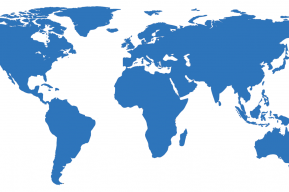There has been exponential growth in knowledge-based firms and start-ups in Iran (chapter 15). This trend is the result of heightened domestic demand, combined with the multiplication of technology incubators and accelerators since the launch of the country’s first public innovation centres in 2015.
By 2020, 49 innovation accelerators had been established with private equity and 113 innovation centres had been set up in partnership with science parks and major universities. Technology incubators, meanwhile, have been providing graduate entrepreneurs with co-working spaces and mentoring on campus to help them launch their own start-up.
The government has been encouraging start-ups to diversify into knowledge-based fields. A series of laws and policies adopted since 2015 have removed barriers to competition and enhanced the financial support system for innovation.

Between 2014 and 2017, exports of knowledge-based goods grew by a factor of five, before slumping in 2018 after the USA withdrew from the Joint Comprehensive Plan of Action (2015), commonly referred to as the nuclear deal, and reimposed sanctions. This move has put the economy under a lot of pressure.
However, the restoration of sanctions has also motivated companies to use local suppliers of knowledge-based goods and services. One targeted sector has been renewable energy but, despite attempts to boost domestic manufacturing and employment, renewables still contribute less than 1% of the energy mix.
Market incentives have not sufficed to boost business investment in R&D, which dipped from 35% to 28% of domestic research spending between 2014 and 2016.
One imperative will be to adapt academic programmes to the needs of the job market. Despite growth in the number of master's and PhD graduates, there is a high share (39%) of unemployment among university graduates.
in 2016, down from 35% in 2014
- Figure 15.1: Socio-economic trends in Iran
- Figure 15.2: Trends in innovation in Iran
- Figure 15.3: Trends in higher education in Iran
- Figure 15.4: Trends in scientific publishing in Iran
- Figure 15.5: Trends in research expenditure in Iran
- Figure 15.6: Breakdown of Iran’s primary energy supply by source, 2014 and 2017 (%)
- Box 15.1: Persisgen: Iran’s first accelerator for medical biotechnology
- Box 15.2: Stricter laws in Iran for environmental protection






